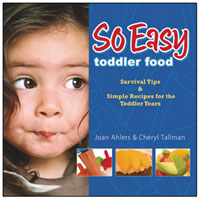 Encouraging healthy eating is about balance – even when it comes to taste. Here are a few tips that can help you expand or improve the balance in your child’s taste buds.
Encouraging healthy eating is about balance – even when it comes to taste. Here are a few tips that can help you expand or improve the balance in your child’s taste buds.
Experiment with Tastes: Allow your child to experience and identify the four unique tastes that make up flavor – sweet, salty, sour, bitter. Taste small amounts of different ingredients to identify which taste category they belong to. This can be a fun kitchen activity when preparing dinner!
Stay Balanced: Good taste is a balancing act. Include a variety of tastes in your meals and encourage your child to try all foods. Experiencing the same tastes all the time is not a path to healthy eating.
Ask Them and Talk About It: When you hear “that’s yummy!” or “Yuck – that’s terrible!” – ask which flavor is best or bothering. The more you understand your child’s taste preferences the easier to guide (and expand) their food choices.
Sweet Tendency: Both breast milk and formula are sweet. It is the first taste we develop and as a result we’re already “off balance” when we begin eating foods. It is believed the earlier you introduce your child to other tastes, the better chance you have of keeping a “sweet tooth” from overpowering the taste buds.
About the author: Cheryl Tallman is the co-founder of Fresh Baby, creators of the award-winning So Easy Baby Food Kit, and author of the So Easy Baby Food Basics: Homemade Baby Food in Less Than 30 Minutes Per Week and So Easy Toddler Food: Survival Tips and Simple Recipes for the Toddler Years. Visit Cheryl online at www.FreshBaby.com for more delicious tips.
Ask Them and Talk About It: When you hear “that’s yummy!” or “Yuck – that’s terrible!” – ask which flavor is best or bothering. The more you understand your child’s taste preferences the easier to guide (and expand) their food choices.
I would add to this be aware if they describe food as bad, itchy, burns, scratchy (by this I meant I itched on the inside hard to explain) , or other words that describe discomfort. My parents listened without making a big deal. If I described food as being physically uncomfortable I was offered it, allowed to refuse, and given alternatives. There were people that felt my parents were spoiling me by doing this.
They already knew that I was immune compromised, and had 1 deadly food allergy. The docs wouldn’t test me for food allergies when I was little. They were afraid the test would endanger my life. (The blood test wasn’t available). They finally tested me in HS – by spreading the 2 days of test out over 5 days. I still had to get an epi 2x. The list of foods that I needed to be aware of because I was intolerant but not allergic included every food I had complained about as a kid.
(I had my first allergic reaction within the 1st hour of being born. My parents dealt with a large number of problems. They did a great job and I’m largely healthy now. Except I’m allergic to Houston.
Another way to go about introducing new a wide range of foods to your kids is to start right from the beginning. My son is 8 mos old and has never had pureed foods. He eats directly off my plate. We keep a close eye on him and never put food in his mouth – he feeds himself. That part is very important, putting whole food into a baby’s mouth is a choking hazard. My son will, literally, eat anything we give him. We have yet to find a single thing he doesn’t like. He eats hummus and Greek olives, fish and venison, rutabaga and turnip, even lemon and curry. And he has never even come close to choking, not once. He used to gag often in the beginning, but that’s normal and not anything to be concerned about. I recommend reading “Baby-Led Weaning” by Gill Rapley and Tracey Murkett for more info about this form of intraoducing solids.